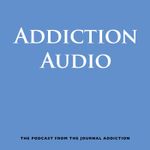Opioid agonist treatment, drug related deaths and dynamic models with Matt Hickman
In this episode, Professor Matt Hickman talks about using population modelling to identify the population implications of Opioid Agonist Treatment (OAT). He covers the impact that OAT has on drug-related deaths and other causes of mortality as well as how models can be used to explore what mortality rates would have been without OAT in New South Wales, Australia.
Professor Hickman talks about their findings that, without OAT, the number of overdose deaths would have been 50% higher.
He also talks about how the research team set up a dynamic model that they used to explore the data, matching incarceration and OAT records. They then used those data alongside findings from systematic reviews to model the hypothetical impact of OAT on a real population.
Original paper here: Modeling the population-level impact of opioid agonist treatment on mortality among people accessing treatment between 2001 and 2020 in New South Wales, Australia by Antoine Chaillon and colleagues. Published in Addiction (2022)
Hosted on Acast. See acast.com/privacy for more information.
